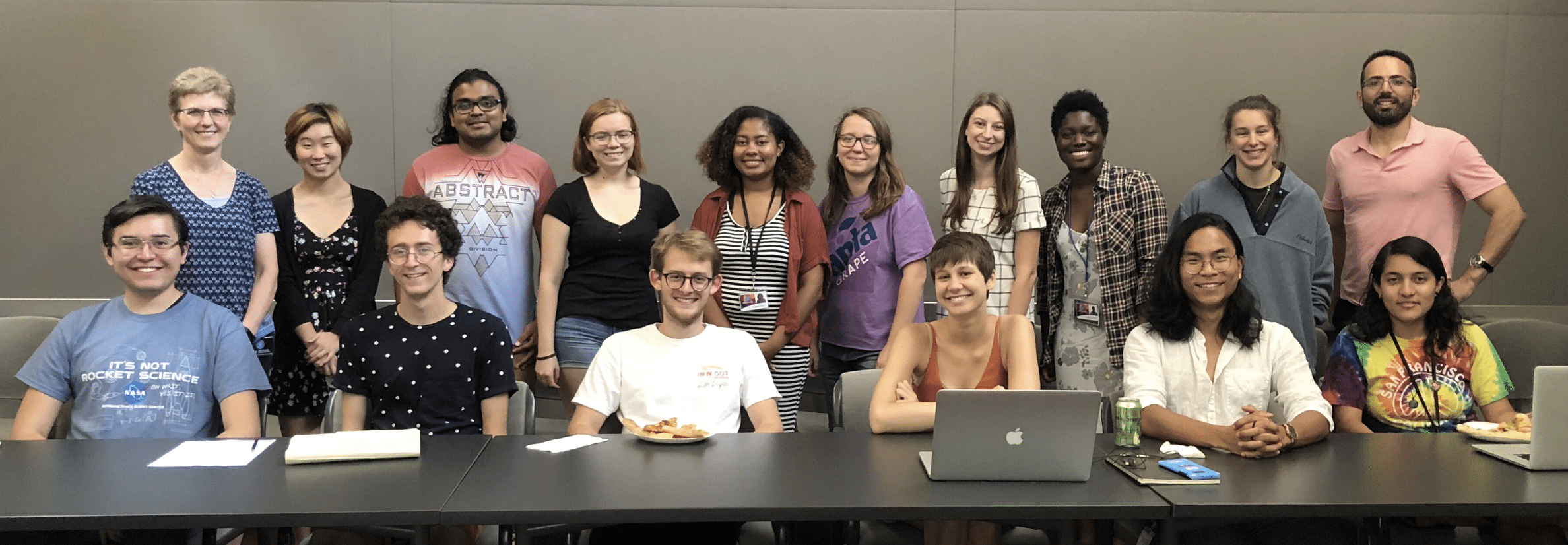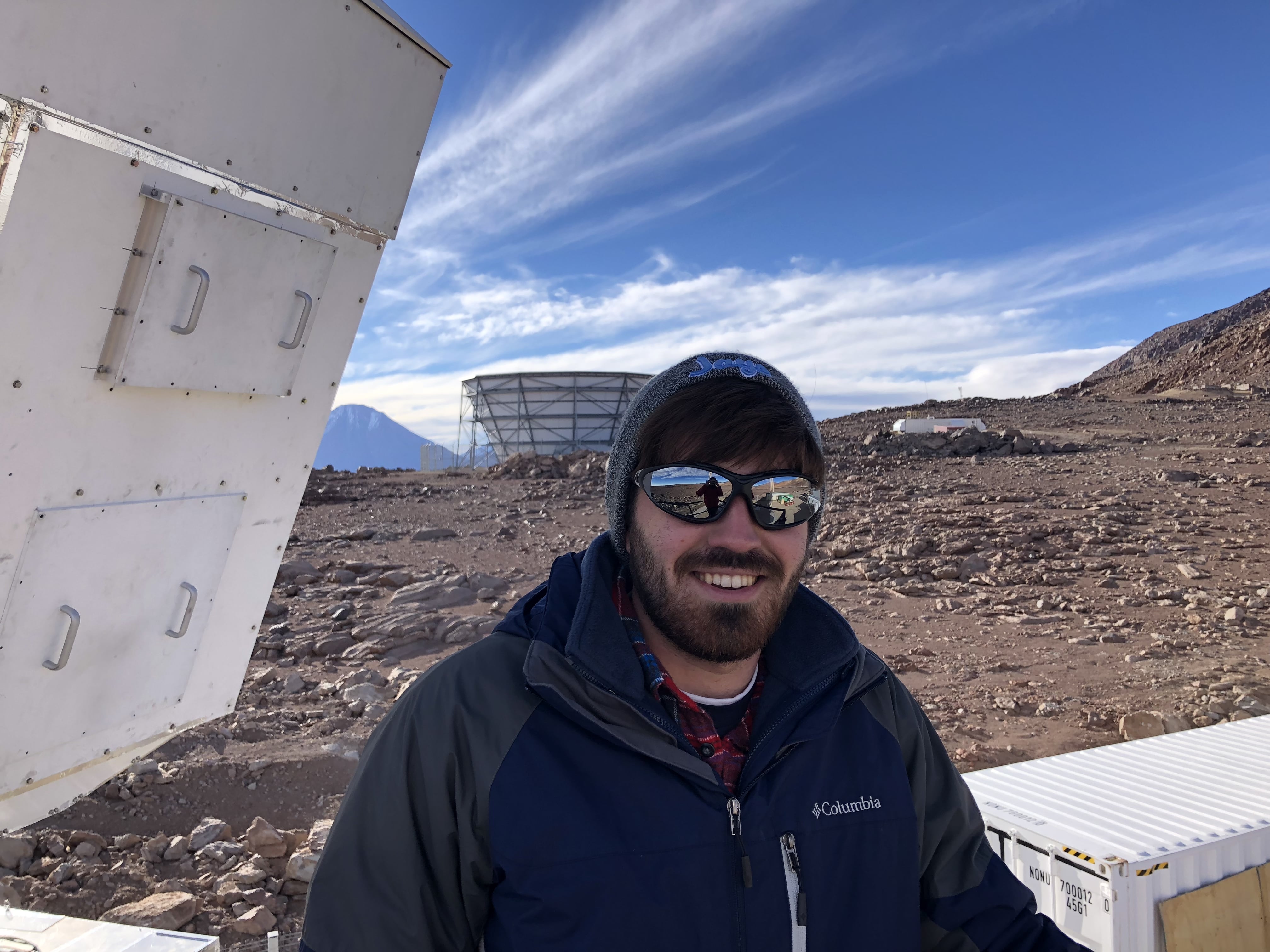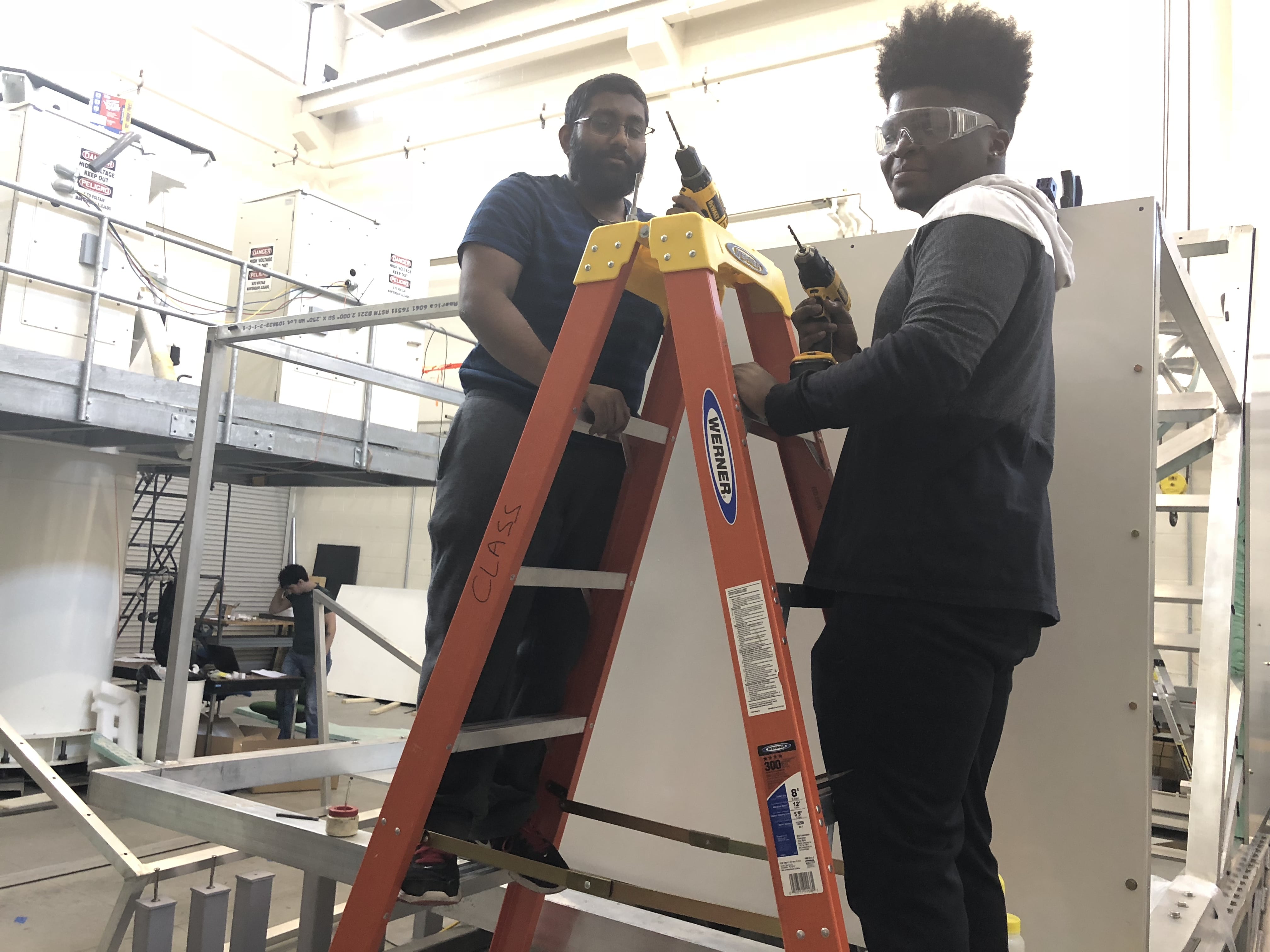We had another packed summer! A fantastic group of students participated in exciting research projects with Prof. Marriage, Prof. Schlaufman, Prof. Ménard, Dr. Nataf and Prof. Zakamska. We acknowledge support from the Maryland Space Grant Consortium.

Anant Bhargava (advisor: Prof. Ménard) – developed an online platform to detect locations displaying regular patterns in Google Earth images. These sites will be studied by researchers in ecology.
David Carcamo and Daniel Swartz (advisor: Prof. Marriage) designed a new database system that greatly improved access to CLASS telescope data.
Ross Dempsey (advisor: Prof. Zakamska) finished his paper on giant ionized regions around active supermassive black holes and started working on the complex gas dynamics in the Orion starforming region.
Saianeesh Haridas, Andre Nottingham (Morgan State Univ), and Caroline Thomas (advisor: Prof. Marriage) collaborated on constructing the three-axis mount for the next CLASS telescope.
Sasha Novack (advisor: Prof. Marriage) assembled the polarization modulator for the 150/220 GHz CLASS telescope.
Karl Osterbauer (advisor: Prof. Schlaufman) discovered the existence of an average metallicity gradient in the Milky Way’s ultra-faint dwarf spheroidal galaxy population.
Diva Parekh (advisor: Prof. Marriage) completed a total overhaul of the CLASS public outreach site, including our first foray into social media.
Graham Reynolds (advisor: Prof. Marriage) built out the CLASS cryogenic camera and a circular polarization calibrator.
Gary Rhoades (advisor: Prof. Marriage) traveled to the high Andes in Chile to see the CLASS telescope through the Austral winter months.
Nikita Shtarkman (advisor: Prof. Ménard) – used astronomical data with millions of galaxies to create a map of the Universe.
Zhiyuan Song (advisor: Prof. Ménard) – created a new full-sky map of dust grains in the Milky Way by combining several astronomical datasets.
Hanru Sun (advisor: Prof. Ménard) – performed statistical semantic analyses to study various trends in the scientific literature over the past 20 years.

Gary Rhoades at the telescope site
Devon Williams (advisor: Prof. Marriage) measured the microwave transmission of CLASS optics.
Turner Woody (advisor: Prof. Schlaufman) discovered a “fundamental plane” for the Milky Way’s globular cluster system that provides the first direct observational support for the modern theory of the assembly of the Milky Way’s globular cluster system. It also shows clear evidence for dynamical friction in the halo of the Milky Way.
Katherine Xiang (advisor: Dr. Nataf) analyzed line-of-sight velocities and surface brightness profiles of nearby galaxies from the MaNGA survey. She used these data to evaluate dynamical predictions of buckling bars from state-of-the-art N-body models of galaxies.

identification of line-of-sight velocity signatures of the buckling phase (left) compared to a non-buckling galaxy (right) developed by Katherine Xiang
Finally, we had an exciting series of talks aimed at undergraduate researchers. The talk series was a joint collaborative program between JHU CARE and the Space Astronomy Science Program at STScI (we are grateful to Carolyn Slivinski for organizing).
June 20 Johns Debes (STScI) The dust in planetary systems from birth to death
June 25 Jason Kalirai (STScI) Hubble’s recent discoveries and a look forward to JWST and WFIRST
June 27 Joel Green (STScI) Planet formation
July 2 Marc Postman (STScI) LUVOIR
July 9 Brice Menard (JHU) Big data
July 11 Andy Fox (STScI) The life of a grad student
July 16 Lauren Corlies (JHU) Galaxies
July 23 Emanuele Berti (JHU) Gravitational Waves
July 25 Margaret Meixner (STScI) NASA decadal study on Origins Space Telescope — large missions
Aug 1 Nancy Levenson (STScI) [A talk on astronomy careers]
Aug 8 Max Mutchler (STScI) Planetary science with Hubble / Careers at STScI
Aug 15 Graeme Addison (JHU) Cosmology: overview and some interesting recent developments by local astrophysicists

